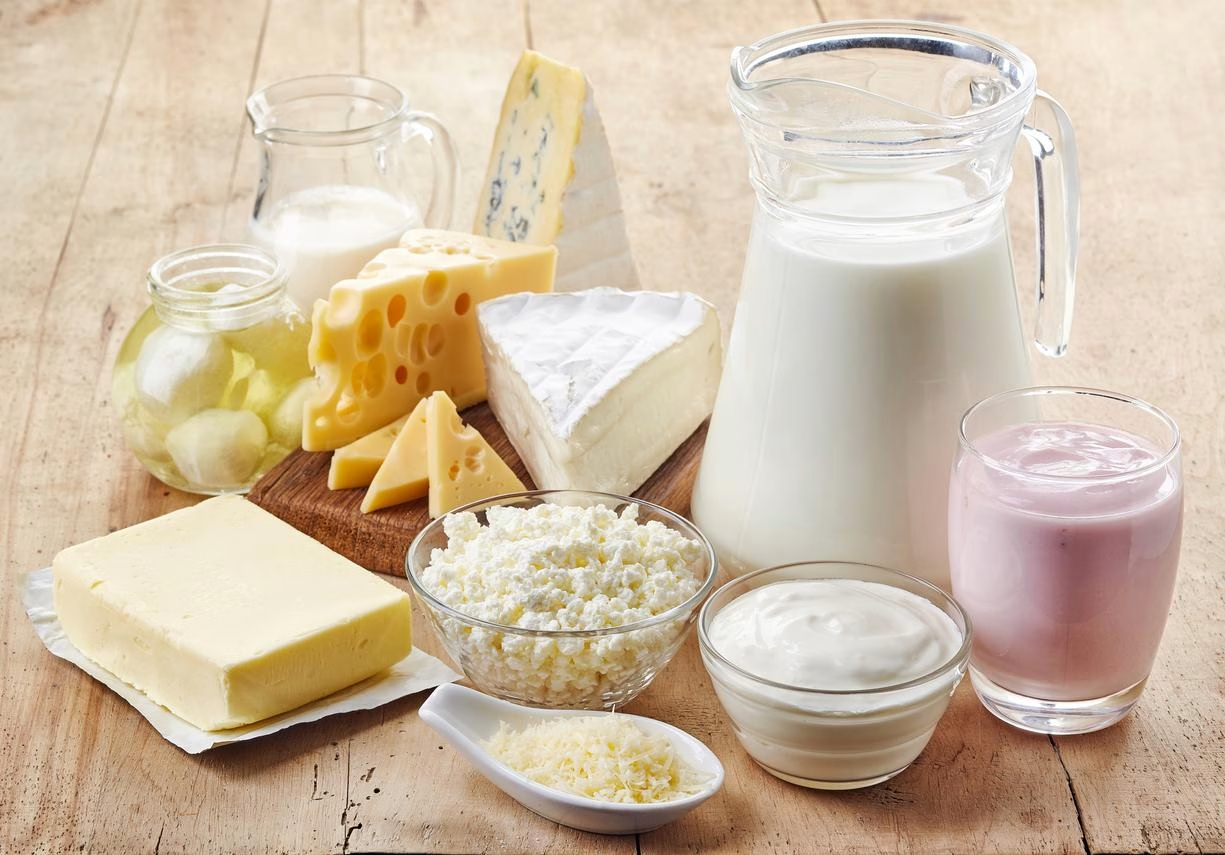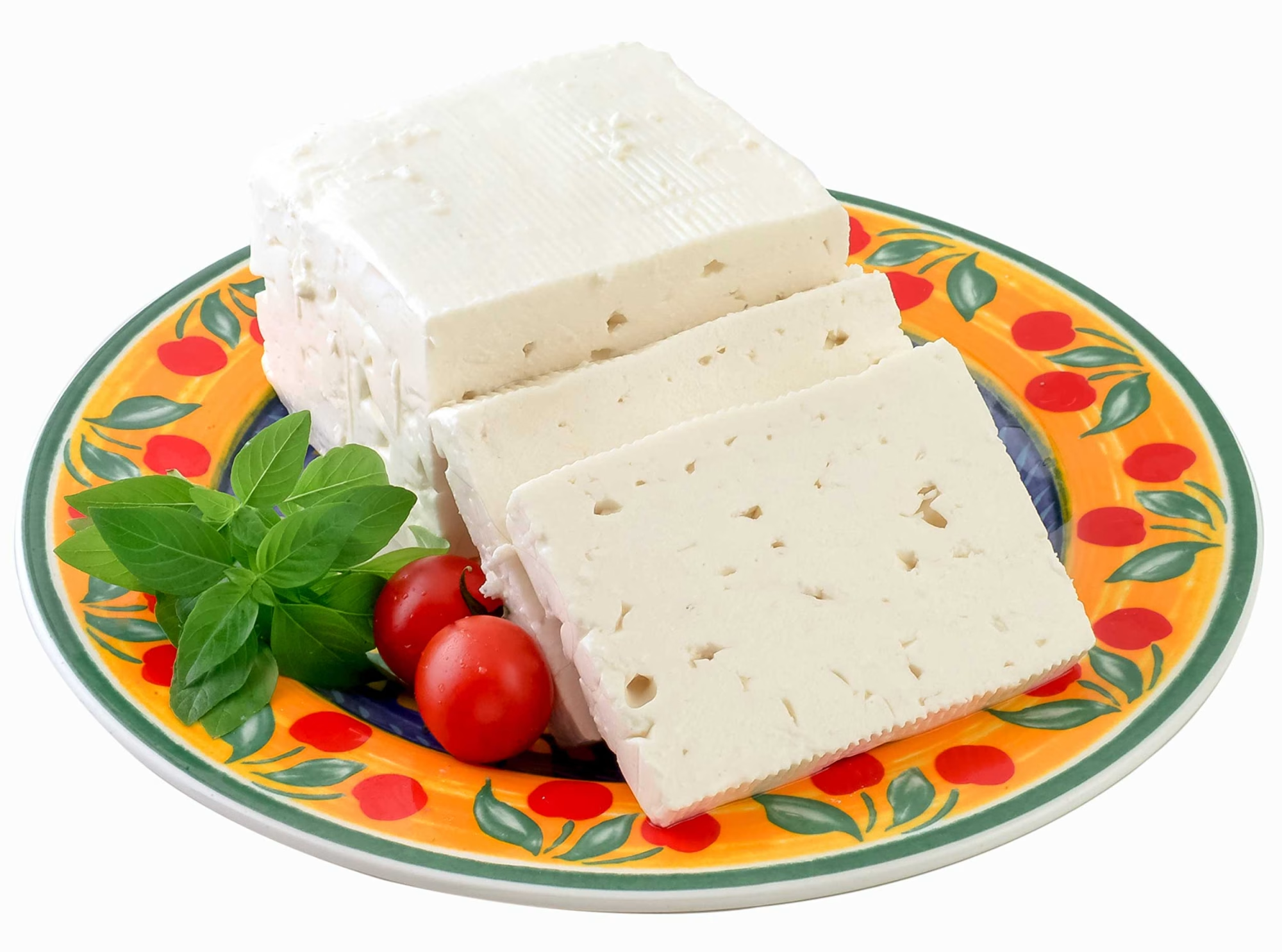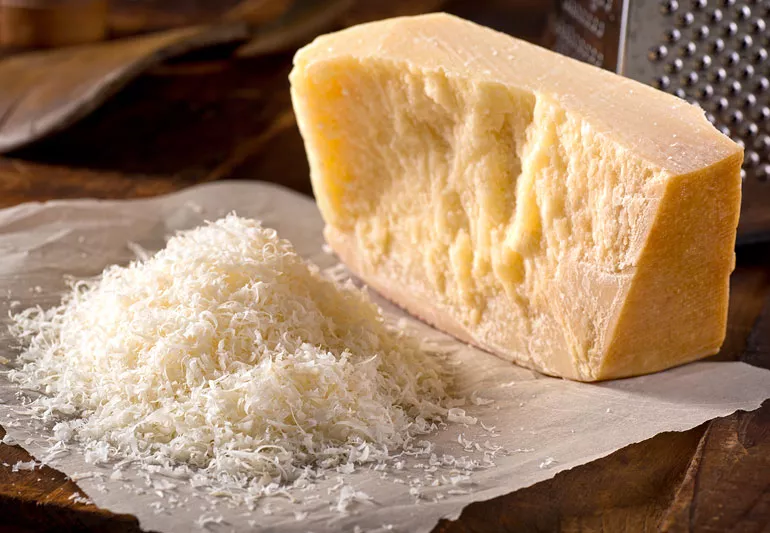Feeling the eggnog blues? See how cheddar can save your holiday. This cheese is the ultimate fix for dairy fans this season.
Imagine this: holiday lights twinkling, the smell of pine filling the air, and glasses of eggnog—a traditional holiday drink that people have enjoyed since colonial times. The rich mix of milk, cream, nutmeg, and vanilla is as much a part of the holiday season as the sound of sleigh bells. But not everyone loves eggnog; it’s a drink that divides people. A poll by YouGov shows that one out of four Americans pick eggnog as their favorite holiday drink, and it’s especially popular with older people. Last year, Americans drank more than 16 million gallons, showing just how loved it is during the season.
However, drinking too much eggnog, significantly when it’s spiked with alcohol, can have its downsides. The creamy, festive drink might lead to after-party regrets for some. That’s where cheddar cheese comes into play. This dairy classic is now being seen as a possible solution. New research shows that Cheddar, rich in probiotics, might help break down alcohol in the body and reduce hangovers. We might need to add Cheddar to our holiday snack plates.
In this science-supported twist, Cheddar could become a helpful friend in avoiding the aftereffects of too much eggnog. Imagine pairing cheddar cheese with a glass of eggnog—not just because they taste great together but because Cheddar could make us feel better after festive indulgence. It’s an exciting idea—a blend of good taste and well-being that might change how we enjoy holiday traditions, letting us savor the season’s treats with more peace of mind.
The Timeless Tapestry of Eggnog: A Toast Through History
Ah, eggnog—a creamy drink with a unique charm that adds a special touch to the winter season. For many, it’s as much a part of the holidays as twinkling lights and festive gatherings, bringing comfort and nostalgia with its frothy top. The rich, creamy texture and the sweet, spicy taste evoke memories of holidays past, making it a genuinely heartwarming tradition.
The history of eggnog goes back centuries. It started with the British “posset,” a hot milk drink mixed with ale or wine. When settlers brought it to America, it changed, as milk and eggs were easier to find here than in Britain. People added rum or bourbon, which became a treat at gatherings and parties.
Today, eggnog is a taste of cheerful indulgence and old traditions. When late November rolls around, it’s like seeing an old friend. According to a YouGov survey, one in four Americans picks eggnog as their holiday drink, showing its lasting popularity. The anticipation of its arrival adds an extra layer of excitement to the holiday season. Interestingly, older folks love it even more, adding to the festive spirit.
The magic of eggnog comes from its simple, rich ingredients. It’s deliciously thick and mainly made of eggs, cream, and milk, with spices like nutmeg and cinnamon. Some versions add vanilla or caramel with a bit of brown sugar. Adding spirits like rum or brandy turns it into a cozy drink.
Nowadays, there are vegan and lactose-free eggnogs, making them available to more people. However, it never loses its creamy goodness, welcoming everyone during the holidays.
Whether you scoop it from a bowl surrounded by friends or grab a carton at the store, eggnog is a key part of holiday traditions. Its appeal combines the past and present in a swirl of creamy richness.
Eggnog Magic: The Hearty Holiday Elixir
Eggnog is a festive treat with real nutritional benefits in the holiday flavors. Its creamy texture and sweet taste make it a holiday favorite, but there’s more to it than tradition.
Eggnog is known for being high in protein. A small four-ounce serving has about 5 to 6 grams of protein, making it a filling holiday drink. However, it’s also high in calories. A small cup can have over 223 calories, especially if it’s traditionally made with cream and whole eggs.
While delicious, eggnog’s richness can lead to overindulgence. Adding alcohol can increase the calories and the chances of drinking too much, possibly leading to an unpleasant morning after.
This is where cheddar cheese comes in as a balancing act. Aged Cheddar is tasty and has probiotics that help with alcohol metabolism and support liver health. These probiotics, similar to those found in yogurt, aid digestion and boost the immune system, which is a nice perk during the wintertime. Cheddar also contains a lot of calcium, which is good for your bones. Additionally, it contains compounds like CLA, which may reduce inflammation and support heart health. As we enjoy the holiday season, cheddar cheese is the perfect savory partner to keep our eggnog indulgence in check.
Cheddar Cheese: The Unassuming Hero of Holiday Celebrations
Cheddar cheese is an integral part of holiday meals and recipes. It is one of the most popular cheeses in the world, adding flavor and nutrition to festive dishes. Its versatility allows you to enjoy it on a cheese board or incorporate it into various recipes, sparking creativity in your holiday cooking.
Cheddar is not just tasty; it’s also nutritious. It’s packed with protein, which helps keep your energy up during the hectic holiday season. Plus, aged Cheddar is full of probiotics, the healthy bacteria that support your gut and might help your body process alcohol. This makes it a valuable addition to your holiday meals, particularly if you have eggnog with a little extra kick.
Cheddar’s probiotics, similar to yogurt’s, help with digestion and boost the immune system, which is a nice perk during the wintertime. Cheddar also contains a lot of calcium, which is good for your bones. Additionally, it contains compounds like CLA, which may reduce inflammation and support heart health. These benefits contribute to overall well-being during the holiday season.
After enjoying eggnog, Cheddar can help reduce hangover symptoms thanks to its probiotics. It aids in breaking down alcohol and protecting the liver, which is especially helpful if you’ve had one too many drinks. Pairing Cheddar with holiday snacks satisfies your taste buds and protects against overindulgence.
So, when you set out the cheese platter, remember that Cheddar is more than an add-on. It’s a key player in your festive celebrations, providing taste and health benefits and proving it’s a holiday hero. Why not pair it with your next glass of eggnog and see how it enhances your holiday experience?
Cheddar: The Science-Backed Saviour for Eggnog Excess
If you’ve had too much eggnog, there are more than just old stories about using cheddar cheese to help. Cheddar’s power in fighting alcohol’s effects comes from probiotics. A study published in the reputable Journal of Functional Foods shows that probiotic cheeses can help break down alcohol and ease hangover symptoms.
The study explains that certain probiotics in aged cheeses help process alcohol. These probiotics in cheeses like Cheddar, Swiss, Feta, and Gouda help the liver handle alcohol better. They break down alcohol byproducts less harmlessly, offering protection against liver damage.
The researchers say these probiotics make alcohol processing more efficient, reducing liver damage and easing hangover symptoms by helping restore the body’s natural balance [Journal of Functional Foods, 2024]. So, reaching for the cheddar platter might be wise if you indulge too much.
Cheddar’s Timeless Melody: Supporting Dairy’s Seasonal Crescendo
As holiday celebrations grow and eggnog flows at parties, cheddar cheese quietly supports the dairy industry. A classic favorite with strong ties to dairy farming, Cheddar is key in meeting holiday food needs and boosting the economy for dairy producers. Its lasting popularity and flexible use in food and retail offer a foundation for economic stability, balancing out year-round changes in the market.
Cheddar cheese production is a significant part of the dairy industry, providing a valuable income source for dairy farmers. The strong demand for Cheddar isn’t just a holiday—it’s crucial for the dairy business all year. Each year, making Cheddar helps farmers maintain a steady income, as it is regularly used in homes and restaurants. This steady need confirms Cheddar’s importance to the economy. When the holidays kick in, dairy farms rely on Cheddar to take advantage of increased dairy use.
Besides the bubbly charm of eggnog and holiday excitement, cheddar cheese is a steady guard against market ups and downs. Used in all kinds of recipes, from fancy to simple, Cheddar is loved by both chefs and shoppers. This popularity keeps sales high in grocery stores and specialty shops during the holidays and beyond. Such market trends make cheddar an appealing option for dairy farmers to match buyers’ wants and follow economic patterns. While milk and cream shine through eggnog, Cheddar quietly fills shelves and tables during festive times.
From Turkey to Tarts: The Cheddar Revolution in Holiday Cuisine
Cheddar cheese is a creative way to spice up holiday meals and snacks. While eggnog is a holiday favorite, Cheddar can offer a fun and tasty twist to your celebrations. Try these ideas to impress your guests with some cheesy flair.
Picture a juicy Cheddar and Cranberry-Stuffed Turkey Breast. The sharp cheddar flavor mixes well with tart cranberries, creating a delightful taste experience. To make this dish, open the turkey breast, fill it with Cheddar and cranberry sauce, roll it up, and bake it. This dish adds an exciting twist to the turkey and will wow your guests.
Cheddar and chives scones are perfect for adding a touch of class. They combine Cheddar and fresh chives for a savory treat that balances out the season’s sweet desserts. Serve them with herb butter or smoked salmon as a tasty starter.
A cheddar fondue will be a hit at your holiday party. Melt Cheddar with white wine and garlic to make a smooth dip for bread, apple slices, and veggies. This dish warms the room and gives guests a reason to gather and enjoy themselves.
For dessert, try something new with a Cheddar and Apple Pie. Adding Cheddar to the pie crust gives a savory twist that pairs well with sweet apples. This unique dessert will surely be a hit and spark conversations.
Using Cheddar in these dishes shows its versatility in the kitchen. These creative recipes offer a cheesy eggnog alternative and inspire your guests to think outside the box. Enjoy the festive season, and let Cheddar bring excitement to your holiday table.
The Bottom Line
In the holiday season of indulgence, cheddar cheese becomes more than just a side dish; it turns into a helpful friend—especially when we’ve had too much eggnog. Filled with probiotics and able to help process alcohol, Cheddar provides more than just its delicious taste; it helps maintain health during celebrations. When you enjoy the taste of eggnog and rich meals this holiday season, consider including Cheddar as an appetizer and an essential part of your festive plans.
Think about the role this unique dairy product could play in your holiday events. Could this be the year when Cheddar moves from the cheese platter to be a star in your holiday dishes? By welcoming Cheddar, you add taste and bring a tradition of health and joy into your celebrations. As you plan your parties, consider making Cheddar a central part of your gatherings. What are your choices today to nourish your body and cherished holiday traditions?
Summary:
As the holiday season envelops us in its familiar warmth and cheer, eggnog emerges as a quintessential flavor, beloved by countless Americans yet an acquired taste to many. This rich, creamy concoction, complemented by hints of nutmeg and vanilla, has been a staple since colonial times. However, moderation remains key when partaking, especially in its boozy variant. For those indulging more liberally, an unlikely savior in the form of cheese awaits. Recent studies highlight probiotic-rich cheeses such as Cheddar for their ability to ameliorate the effects of alcohol. According to the Journal of Functional Foods, Cheddar might enhance alcohol metabolism, lessen liver injury, and dampen hangover severity. These findings present new avenues for cheese consumption and market opportunities for dairy producers during this season of heightened demand, providing a valuable income source for dairy farmers. Whether a juicy Cheddar and Cranberry-Stuffed Turkey Breast or a savory cheddar fondue, Cheddar cheese adds nutritional richness and supports holiday culinary traditions.
Key Takeaways:
- Eggnog increases the demand for cream during the holiday season, boosting the dairy industry.
- Probiotic-rich cheeses like Cheddar can aid in alcohol metabolism, potentially reducing hangover symptoms when consumed with alcoholic eggnog.
- Eggnog is a holiday favorite, with many Americans enjoying it at home during the festive season.
- Aged cheeses, such as Cheddar and Gouda, contain beneficial probiotics that support digestion and liver health.
- Cheddar cheese plays a dual role by enhancing holiday celebrations and supporting dairy producers during peak seasonal demand.
Learn more:
- The February Dairy Supply and Utilization report from the USDA revealed market secrets
- The Dairy Dilemma: Oversupply or Under-demand? Unpacking the Issue
- What’s New in Dairy? Exciting Product Debuts from January to June 2024
 Join the Revolution!
Join the Revolution!
Bullvine Daily is your essential e-zine for staying ahead in the dairy industry. With over 30,000 subscribers, we bring you the week’s top news, helping you manage tasks efficiently. Stay informed about milk production, tech adoption, and more, so you can concentrate on your dairy operations.







 Join the Revolution!
Join the Revolution!













